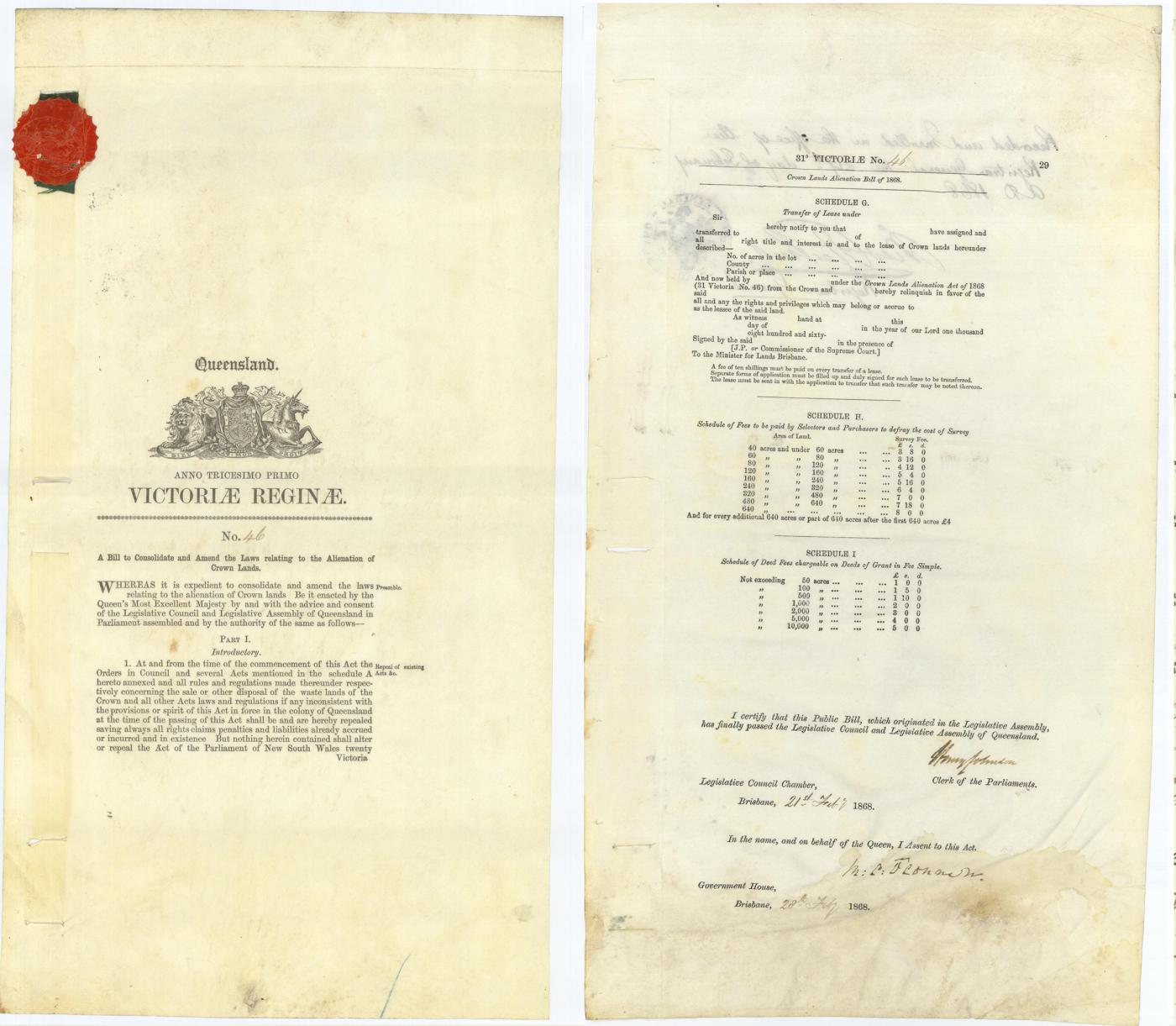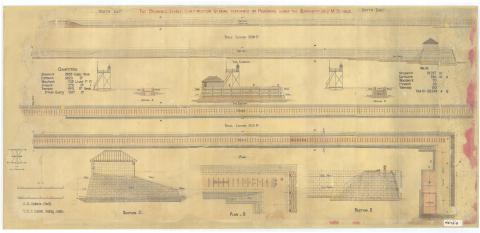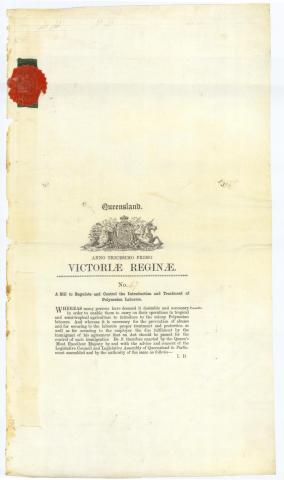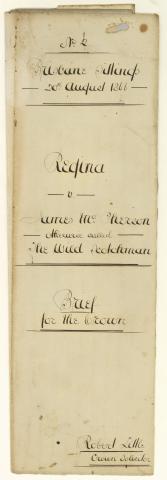
- News of the day
-
The Queenslander, Saturday 10th July 1869
Crown Lands Alienation Act of 1868
Sir: Many letters have appeared during the last few months, in your valuable journal, censuring the Civil Service, more especially the Survey Department. Now Sir, as a selector, I must admit that a little more might be done to alleviate the difficulties which intending selectors have to contend against, one in particular -viz., when a person wishes to select land he generally goes to the Survey-office to see the maps. The map exhibitor gives him all the information he can; but that is small, owing to the maps not showing many of the general features of the country. As a suggestion, I trust the Minister for Lands will instruct the map exhibitor to ride round and make a general report as to where the best farming land is to be procured. It would not entail any additional expense beyond forage allowance for that officer for a month or so to go round this and the Ipswich districts. I, with many others, trust that this source will be adopted.
Apologising for trespassing so long in your valuable columns, -Yours
A Selector (Moggill Creek, July 6)
- Background
-
The Crown Lands Alienation Act of 1868 was Queensland's first serious attempt to deal with the question of closer settlement both as a means of increasing agricultural productivity and to reduce the political power of the pastoral fraternity. Achieving these objectives was seen to be through the creation of a rural yeomanry on small farms, with this legislation being the first to use the words 'selector' and 'selection'. In the hands of later writers such as Arthur Hoey Davis and Henry Lawson, these words were firmly implanted into Australia's rural mythology, largely through what the legislation failed to address.
Among other provisions, the Act which became effective in 1868, split large pastoral holdings in two, one half of which was subdivided into selections varying in extent from 40 to 160 acres. Theoretically, this made it possible for those with little capital to establish themselves on the land, for selections were procurable at prices ranging from two shillings sixpence to three shillings nine pence per acre payable in five year instalments. In practice, however, pastoralists were able to regain much of the land through various subterfuges, while selectors were inhibited by small domestic markets, distance, the experimental nature of agriculture in Queensland and detrimental environmental factors.



